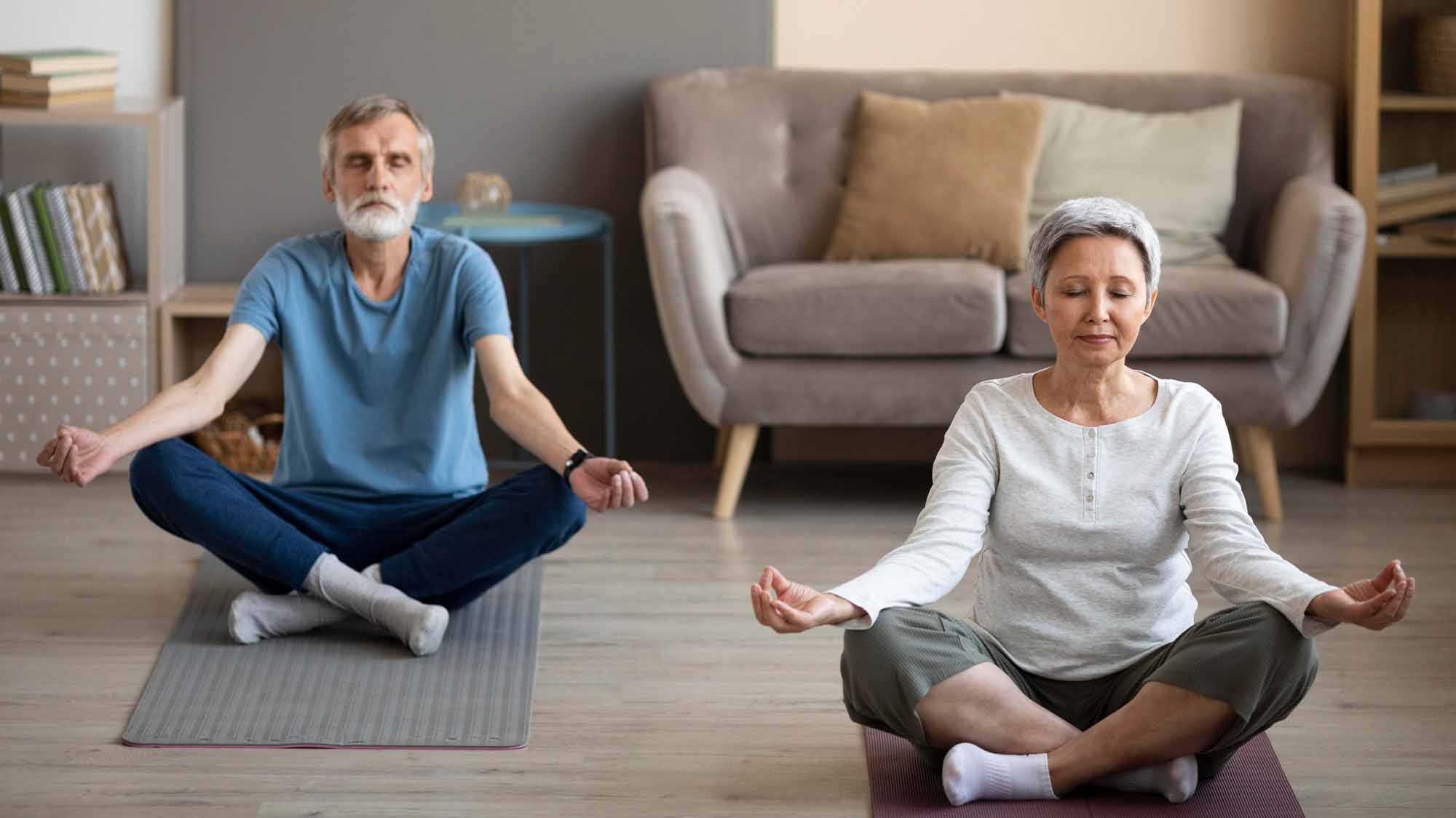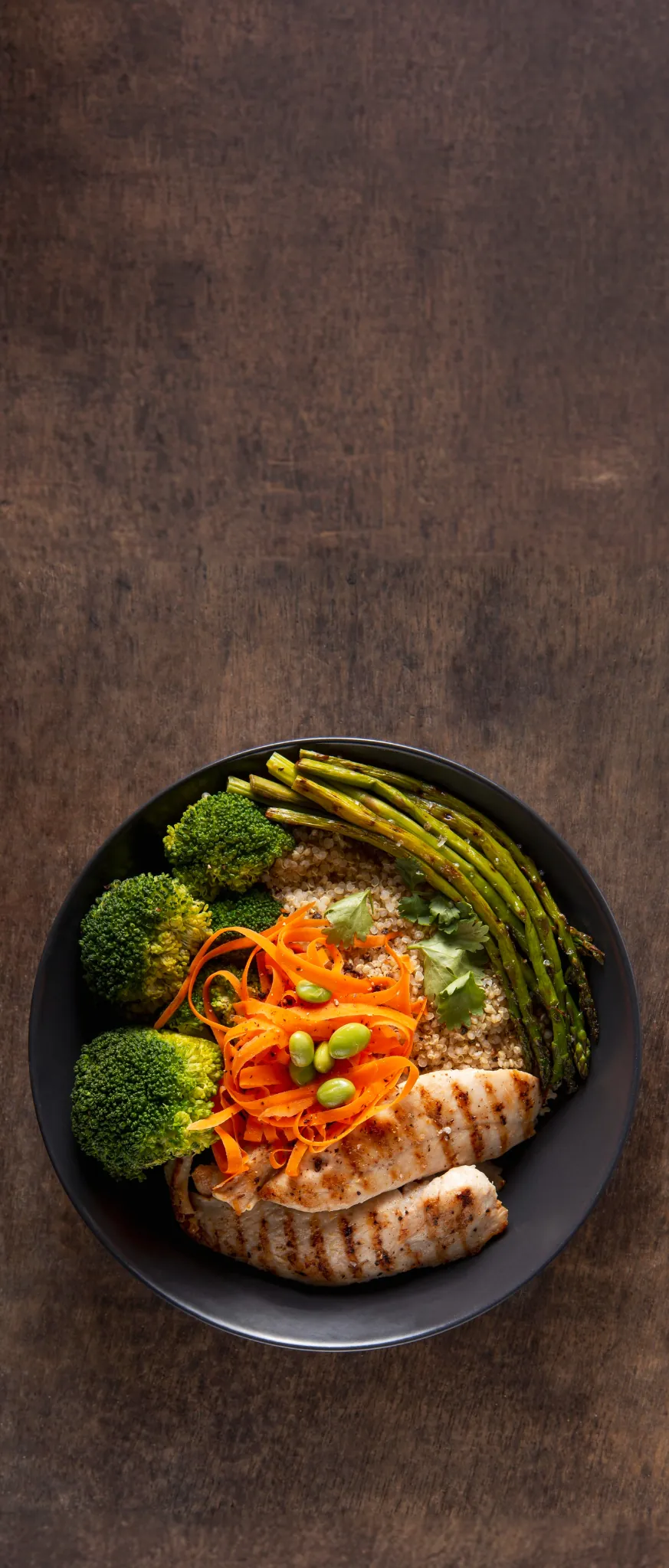10 Simple Breathing Exercises for the Elderly to Improve Lung Function
08 Jan 2024

If you're an older adult living with asthma or chronic obstructive pulmonary disease (COPD), your doctor may recommend breathing exercises alongside medication and physical activity. These exercises don't require a gym membership or workout gear - you can do them comfortably right from home. Below are the 10 best breathing exercises for the elderly, along with why these exercises help and how else you can support your lung health.
Why are breathing exercises for older adults important?
Breathing exercises can improve your:
-
Lung functioning. According to the American Lung Association, breathing exercises get old, stale air out of your lungs. Higher-quality air is associated with improved lung functioning.
-
Ability to recenter yourself in moments of stress or agitation. It's well established that deep breathing in moments of anger or anxiety can bring you closer to calmness. Breathing exercises give you great practice for these high-intensity moments.
-
Digestion. Deep breathing exercises before a meal may expand your abdomen, counter gut stress, and improve digestion.
-
Posture. A 2022 International Journal of Environmental Research and Public Health study found that breathing exercises are effective for improving poor posture.
-
Oxygen intake and distribution. According to a 2018 Journal of Physical Therapy Science study, breathing exercises may increase your maximal oxygen uptake. The term "oxygen uptake" is a measure of how well your body can deliver oxygen to your tissues and how well your tissues use it.
-
Breathing muscle strength. A systematic review published in 2021 in the Canadian Respiratory Journal found that breathing exercises are effective for improving inspiratory strength. The less science-heavy way of saying this is that breathing exercises strengthen your diaphragm muscles.
-
Ability to combat shortness of breath. Several breathing exercises are often recommended as at-home methods for treating shortness of breath.
10 simple breathing exercises for older adults
Below are step-by-step instructions for these straightforward breathing techniques.
1. Pursed-lip breathing
This controlled breathing exercise is associated with slowed-down, easier breathing.
- Breathe in through your nose as usual.
- Purse your lips as though you're about to blow out a candle.
- Breathe out through your mouth, keeping your lips pursed, for twice as long as you breathed in.
- Repeat this breathing exercise for two to three minutes.
2. Complete breathing
With this exercise, you engage your upper chest, diaphragm, and lower ribcage.
- Sit up as straight as possible, then exhale.
- Feel the expansion of your stomach muscles as you inhale. This should relax your stomach muscles.
- Continue to inhale until you've noticed that your chest has expanded with a deep breath.
- Hold your breath for one second.
- Gradually exhale, noticing the inward movement of your abdomen.
- Once you've completed your exhale, repeat this exercise for five minutes.
3. Humming breathing
The steps for this exercise are mostly the same as complete breathing, but with one difference. You'll hum and pull your abdominal muscles inward as you exhale. The addition of humming may make complete breathing more effective for stress management.
4. Chinese breathing
This exercise is derived from the Chinese practice of Tai Chi Chuan, which is designed to promote relaxation and a greater connection with your body. However, if this exercise makes you lightheaded, stop immediately.
- Take three short breaths with your arms at your sides.
- On your first breath, bring your arms to shoulder height in front of you.
- On your second breath, gradually move your arms to your sides at shoulder height.
- On your third breath, bring your arms above your head.
- Gradually exhale and return your arms to your sides.
- Repeat this exercise 10 to 12 times.
5. Diaphragmatic breathing
This breathing exercise promotes relaxation and inspiratory strength.
- Lie on your back, with one hand above your navel and the other directly above it on your stomach.
- Focus on breathing from your diaphragm. You're doing this correctly if you see that your navel hand is rising before your stomach hand.
- Exhale through your mouth for at least twice as long as you've inhaled.
- Continue this exercise for five minutes.
6. Feet breathing
Feet breathing exercises may have relaxing or meditative effects.
- Start breathing deeply but at a normal speed.
- Focus on your breathing and muscle movements. Notice the sequential rise and fall of your diaphragm and chest muscles.
- Clear your mind as you breathe. You may find this easier to do if you close your eyes.
- While you exhale, envision your tension and stress moving down your body and exiting through your feet.
- Repeat this exercise until you feel significantly more relaxed.
7. Buteyko breathing
If you live with asthma, Buteyko breathing may help you experience fewer rapid, gasping breaths during asthma attacks.
- Find a quiet space where you can get yourself in a comfortable position.
- Slowly take shallow breaths in through your nose.
- Continue taking these breaths for as long as you can. You may want to consult with a doctor on how to safely do this breathing exercise.
8. Breathing while in pain
It's understandable, but highly ill-advised, to take shallow breaths or hold your breath when inhaling or exhaling is painful. Instead, try this breathing exercise to fully exhale and inhale while in pain. You'll get the oxygen you need, lowering your body's stress response and thus minimizing extra pain.
- Find a comfortable position in a quiet space.
- Focus on taking a deep, slow breath.
- Concentrate on the sensation of air filling your abdomen.
- Exhale slowly with this same amount of concentration.
- Repeat this exercise until you can breathe with less pain.
9. Waking-up breathing
That big stretch and inhale when you first wake up is totally natural. It's also a great segue into the below breathing exercise for older adults.
- Get out of bed and stand upright.
- Slowly bend forward at the waist, with a slight knee bend so that your legs don't go stiff.
- Take a deep, slow breath as you gently return to your upright position. Keep your head down until you're fully upright again.
- Give yourself a moment, then slowly exhale and bend forward as you begin repeating this exercise.
10. Focused breathing
This breathing technique may have meditative effects.
- Lie down or sit in a comfortable position.
- Close your eyes.
- Inhale normally, then exhale.
- Repeat, but with a deeper breath.
- Take increasingly deeper breaths in and out, and focus on the accompanying bodily sensations and how your breaths are calming your mind.
- Continue this exercise for five minutes, or until you achieve the deepest possible breaths.
Other ways to improve your breathing and lung health
Breathing exercises are only the start when it comes to healthy lungs. For example, increased vitamin D intake may help you live with asthma. Additionally, eating foods with more omega-3 polyunsaturated fatty acids can help you combat shortness of breath if you live with COPD. Furthermore, the antioxidants common in blueberries, green tea, and chocolate are associated with reduced inflammation and, thereby, improved breathing.You can easily get nutrient-rich, delicious meals and drinks for lung health delivered right to your doorstep with Meal Village. Place an order of any size at any time, and we'll cook your meals from scratch using fresh ingredients sourced right here in Chicagoland. Then, just heat and eat your meals - no prep work or cleanup required - to take in the nutrients associated with improved lung health. Browse the Meal Village menu now, then place your order via phone, internet browser, or mobile app to eat well while powering your breathing.



